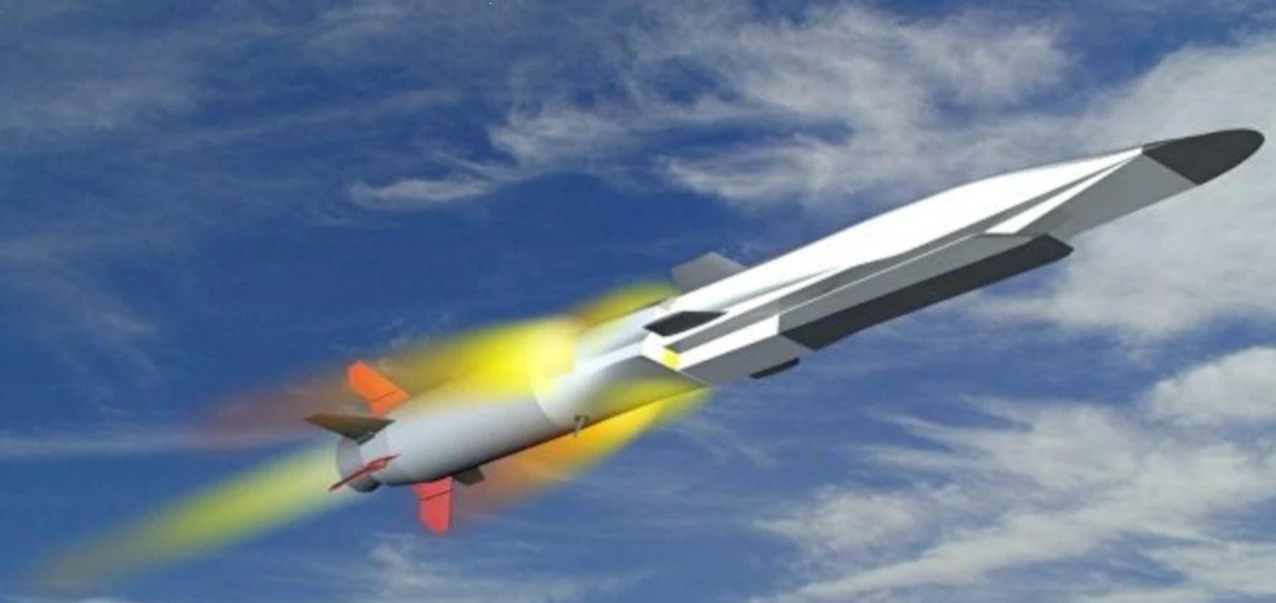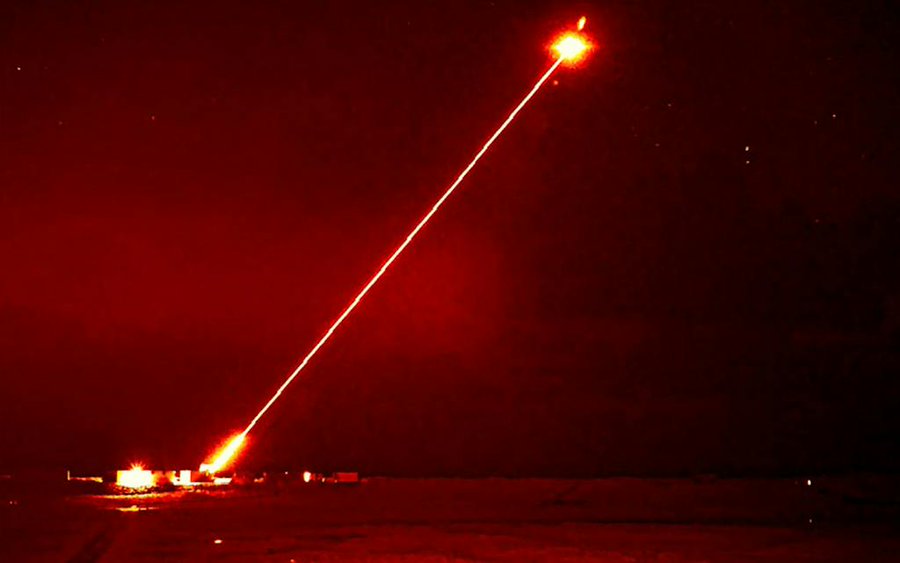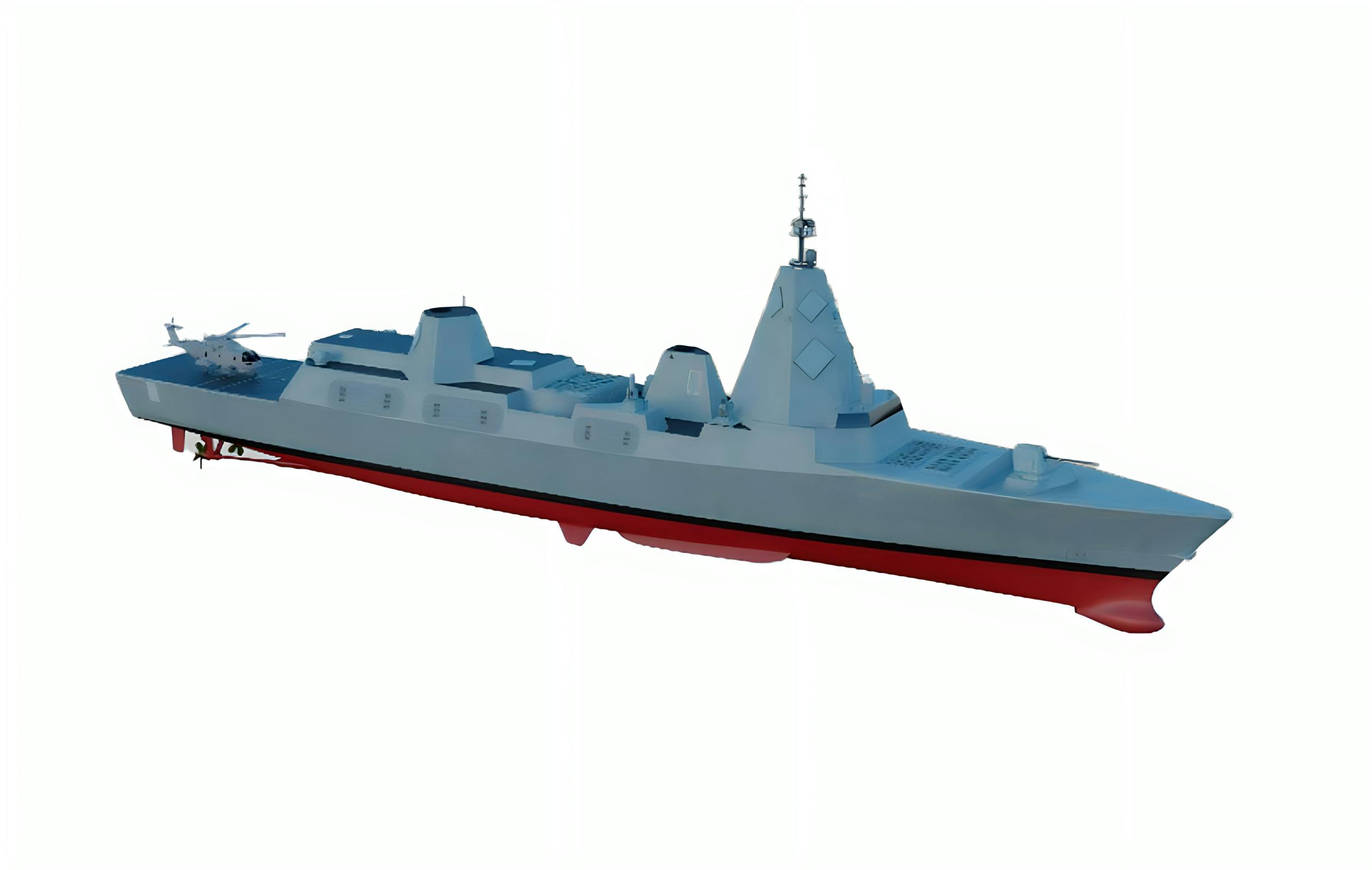The United Kingdom’s futuristic warship, codenamed Type 083, is slated to become part of a distributed sensor network. It will be armed with a laser gun that functions in tandem with air defense systems.
Speaking at the Full Spectrum Air Defence Conference in London, Defence Procurement Minister James Cartlidge unveiled designs for the Type 83 Destroyer, the Royal Navy’s Future Air Dominance System, UK Defence Journal reported.
He said that these new ships would serve as more than just conventional combatants. Rather, they would be integrated into a dispersed sensing network.
“They are a distributed sensor network. Effectively a ‘system of systems’,” Cartlidge stated. He explained that the Future Air Dominance System will use a variety of cutting-edge technology, including sophisticated radar detecting capabilities and directed energy weapons. Additionally, the vessel would have crewed and uncrewed operations for these systems.
“Our Royal Navy is building its Future Air Dominance System. Likely to comprise the new Type 83 Class platforms—which will one day replace Type 45—these are more than just ships. They are a distributed sensor network—effectively a “system of systems,” he noted.
They will be incredibly mechanized. The vessels aim to combine modern weapons like directed energy weapons with missiles, combining sophisticated radar detection capabilities and unmanned systems. The vessel would be able to extend the fleet’s protection, aid in air control over a larger region, and provide more maneuverability thanks to longer detection ranges.
Cartlidge also pointed out: “As the name suggests, dominance is the name of the game. And dominance will be achieved through faster response times and greater lethality over longer distances. Sticking with our present capability, we continue investing in our Sea Viper Evolution program. Ensuring our current crop of world-class warships have the air and missile defense systems to protect Maritime Task Groups against increasingly more complex threats, including ballistic missiles.”

Given its accuracy, quick response, and high “hit probability” against fast-moving missiles, directed-energy weapons (DEW) are becoming more popular as non-kinetic hard and soft-kill defenses against ballistic missile threats. Laser-based air defense has become a focus among advanced militaries, including the United States, especially aboard warships.
Although the minister stopped short of mentioning which laser weapon would be installed on this next-generation warship, Britain has successfully tested the ‘DragonFire’ laser-directed energy weapon (LDEW) system. The DragonFire is a line-of-sight weapon that can engage with any visible target.
Currently, the Type 83 vessel is in the early stages of conceptualization. However, the British MoD announced in February 2022 that the Type 83 Destroyer was being designed to confront the ever-growing threat posed by hypersonic missiles.
The threat posed by hypersonic missiles is bigger now than it was in 2022. For instance, Russia is equipping its warships and nuclear-powered submarines with its cutting-edge Zircon hypersonic missiles. While the Zircons are not invincible, as seen in Ukraine, they may still be hard to shoot down, especially at sea.
Besides Russia, China has also fielded an anti-ship hypersonic missile known as the DF-21 that threatens large naval vessels, including aircraft carriers. So, a large protective arc with newer sensors and DEWs means British military planners envisage the DEWs to destroy the ‘carrier-killer’ DF-21D or hypersonic missiles.

The British MoD did not specify how the Type 83’s laser gun would shoot down a hypersonic weapon. It may not be the first or the only one to conceptualize this. The top admiral of the US Navy, Michael Gilday, stated in August 2022 that directed energy systems were being developed as a potential countermeasure against hypersonic missiles.
Can Laser Weapons Defeat Hypersonic Threats?
DEWs are essentially weapons that use highly focused energy, such as lasers, microwaves, or particle beams, to destroy, harm, or incapacitate targets.
They can be operated at high speeds, making it possible for them to effectively disrupt people, cars, facilities, and equipment.
The discourse about destroying hypersonic missiles using DEWs has been going on for quite some time. As part of a multi-layered approach to air defense, US Defense Contractor Northop Grumman said that it was collaborating with the US Department of Defense to investigate high-wave microwave systems.
The defense contractor said, “High-power microwaves have an important edge over hypersonic weapons – they’re much faster. While hypersonic weapons travel more than five times the speed of sound, high-power microwaves travel at the speed of light – 300 million meters per second.”

The Department of Defense (DoD) estimates that a minimum of one megawatt, or one thousand kilowatt, laser would be required to prevent a hypersonic missile from reaching its target. That is over three times the power output of today’s most sophisticated tactical laser system.
However, it is quite unlikely that a laser of any kind could successfully penetrate the nosecone of a hypersonic missile. These guns are made to survive temperatures above 1,700 degrees, after all, argues Alex Hollings, former US Marine and editor of the Sandboxx defense website.
Hollings further explained that lasers are limited to line of sight by their very nature, unlike interceptors, which can be fired at targets located beyond the horizon. This causes issues when the target requires time for the laser to burn through it. By the time hypersonic missiles came into the lasers’ line of sight, they might be moving at speeds of up to two miles per second, so there wouldn’t be much time to destroy them.
However, despite the naysayers, the UK is all set to design a futuristic warship with a laser gun that will work with air defense missiles to intercept hypersonic threats. Existing laser weapons will likely be modified, or a new gun will be developed from scratch to take on specific threats.
What Is The Type 83 Vessel?
In July 2023, the British Ministry of Defense (MoD) provided a sneak peek into its planned Type 83 destroyers. These futuristic destroyers have capabilities that virtually qualify them as the naval counterparts of sixth-generation aircraft.
The Royal Navy’s Type 45 battleships will be replaced by the Type 83 when it enters service in the mid-2030s.
Type 83 was made public for the first time in March 2021 with the release of the UK government’s defense command paper, “Defense in a Competitive Age”. A subsequent report in the UK Defense Journal (UKDJ) said that a concept image had also emerged at a naval conference.

UKDJ compared it to China’s Type 055 destroyer, which is thought to be the most sophisticated and heavily armed destroyer of its class. The warship is claimed to be equipped with two 30mm or 40mm guns, two Phalanx Close-In Weapon Systems (CIWS), a five-inch main armament, and one more unnamed close-in weapon system.
Further, it is planned that the ship might be included in the “Future Air Dominance System,” a more comprehensive defense system. It is anticipated that the Type 83 destroyers will replace the Type 45 destroyers in use by the latter half of the 2030s. The concept image offers a tantalizing peek at what the Type 83 Destroyer might look like.
With a unique hull that prioritizes speed and stealth and is somewhat reminiscent of Type 26 Frigate and Type 45 Destroyer, the ship’s sleek form is immediately obvious. Its sleek superstructure alludes to sophisticated radar and integration of sensing technologies.
There are also plans to continue investing in the Sea Viper Evolution program to “ensure (advanced) air and missile defense systems to protect Maritime Task Groups against increasingly more complex threats, including ballistic missiles.”
- Contact the author at sakshi.tiwari9555 (at) gmail.com
- Follow EurAsian Times on Google News




